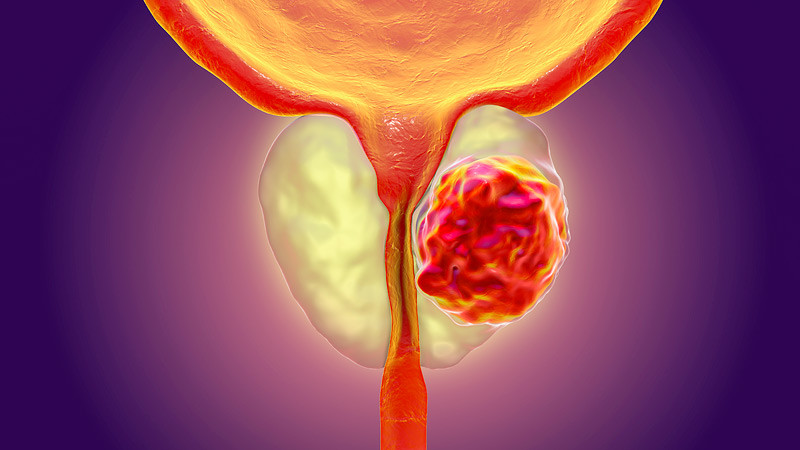
Prostate Cancer Treatment
Prostate Cancer Treatment
Prostate cancer is one of the most common types of cancer in men. It occurs due to the uncontrolled proliferation of cells in the prostate gland. Although it is generally seen in older age, early diagnosis significantly increases the chances of successful treatment. Modern methods such as robotic surgery provide faster recovery and a more comfortable treatment process.
Professor Gökhan Koç, a urology specialist in Izmir, utilizes the latest technologies in the diagnosis and treatment of prostate cancer to offer patients a more effective and comfortable treatment experience. This article will detail the symptoms, risk factors, diagnostic methods, and treatment options for prostate cancer.
1. Symptoms of Prostate Cancer
In the early stages, prostate cancer may not show noticeable symptoms. However, as it progresses, the following symptoms may appear:
-
Difficulty urinating or weak urine flow
-
Frequent urination, especially at night
-
Pain or burning sensation during urination
-
Presence of blood in urine or semen
-
Pain in the pelvic region, lower back, or hips
-
Erectile dysfunction
If any of these symptoms are noticed, consulting a urology specialist for early diagnosis is crucial.
2. Risk Factors for Prostate Cancer
Several factors contribute to the development of prostate cancer. The main risk factors include:
-
Advanced Age: Prostate cancer is usually seen in men over 50 years old.
-
Family History: Having a family history of prostate cancer increases the risk.
-
Genetic Factors: Certain genetic mutations may increase prostate cancer risk.
-
Dietary Habits: Consuming high-fat foods and obesity may raise risk.
-
Lack of Physical Activity: Not engaging in regular exercise can increase risk.
Avoiding risk factors and having regular health screenings are important for prevention and early detection.
3. Diagnostic Methods for Prostate Cancer
Various tests and imaging techniques are used for diagnosing prostate cancer. Main diagnostic methods include:
-
PSA Test: Measures the level of prostate-specific antigen in the blood. Elevated PSA levels can indicate prostate cancer.
-
Digital Rectal Examination (DRE): Assesses the size, shape, and texture of the prostate.
-
Prostate Biopsy: Tissue samples are taken from the prostate and examined microscopically for cancer cells.
-
Imaging Methods: Magnetic Resonance Imaging (MRI) and Computed Tomography (CT) are used to determine tumor location and size.
These diagnostic methods help determine the cancer stage and grade to develop the most appropriate treatment plan.
4. Stages and Grades of Prostate Cancer
The stages of prostate cancer indicate how far the cancer has spread within the prostate and beyond to other parts of the body:
-
Stage I: Cancer is confined to a small part of the prostate and has not spread.
-
Stage II: Cancer occupies a larger portion of the prostate but has not spread outside.
-
Stage III: Cancer has spread beyond the prostate to nearby tissues.
-
Stage IV: Cancer has metastasized to lymph nodes, bones, or other organs.
The grade indicates how much the cancer cells differ from normal cells. The Gleason score is used to grade prostate cancer; a higher Gleason score indicates a more aggressive cancer.
5. Treatment Options for Prostate Cancer
Treatment varies depending on the stage, grade, overall health, and age of the patient. Main treatment options include:
Surgical Treatment
-
Radical Prostatectomy: Complete removal of the prostate gland. Robotic surgery enables this operation with fewer complications, shorter recovery time, and smaller incisions.
Professor Gökhan Koç performs robotic radical prostatectomy, providing patients with faster recovery and a more comfortable treatment experience.
Medication Treatments
-
Hormone Therapy: Drugs that lower testosterone levels are used to inhibit prostate cancer cell growth.
-
Chemotherapy: Potent drugs used to kill cancer cells, mainly in advanced prostate cancer.
Radiotherapy (Radiation Therapy)
-
External Beam Radiotherapy: High-energy rays target and destroy cancer cells.
-
Brachytherapy: Radioactive seeds are implanted directly into the prostate to target cancerous tissue.
6. Advantages of Robotic Surgery in Prostate Cancer Treatment
Robotic surgery is one of the most effective methods for treating prostate cancer, offering significant advantages over traditional open surgery:
-
Minimally Invasive: Smaller incisions result in less pain and faster recovery.
-
Less Blood Loss: Reduced bleeding during surgery.
-
High Precision: Robotic arms have high mobility, allowing surgeons to reach even the most delicate tissues.
-
Fewer Complications: Lower rates of infection and wound healing issues.
-
Shorter Hospital Stay: Patients are usually discharged sooner.
-
Faster Return to Daily Life: Recovery time is shortened, allowing patients to return to work and social activities more quickly.
Professor Gökhan Koç effectively provides these benefits, making treatment processes more comfortable and successful.
7. Post-Treatment Follow-up and Lifestyle Changes
Regular follow-up after prostate cancer treatment is vital to reduce the risk of recurrence. Patients should undergo periodic PSA tests, imaging studies, and medical examinations. Additionally, adopting a healthy lifestyle supports better recovery:
-
Maintain a balanced diet rich in fruits and vegetables to strengthen the immune system.
-
Engage in regular light exercise to support overall health.
-
Manage stress effectively to promote general wellbeing.
Conclusion
Prostate cancer can be successfully controlled with early diagnosis and appropriate treatment methods. Thanks to the advantages of robotic surgery, patients recover more quickly and return to their normal lives sooner. Professor Gökhan Koç in Izmir uses the most current methods in diagnosis and treatment to provide patients with effective and comfortable care.
For more information about prostate cancer symptoms, diagnostic methods, and treatment options or to schedule an appointment, please contact us.

Social Media